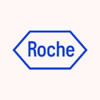
Comparison of PEG-Intron and Two Different Doses of Ribavirin for the Treatment of Chronic Hepatitis...
Chronic Hepatitis CThe purpose of this study is to compare PEG-interferon alfa-2b and two different doses of rivavirin for the treatment of chronic hepatitis C in previously untreated adult subjects

A Study of Peginterferon Alfa-2a in Combination With Ribavirin in Chronic Hepatitis C (CHC) Patients...
Liver CirrhosisChronic Hepatitis CThis study evaluated the clinical response of the efficacy and safety of the combination therapy of peginterferon alfa-2a and ribavirin, compared with an antiviral treatment-free group in CHC patients with compensated LC. Additionally, this study evaluated the dosage reactivity and the pharmacokinetic characteristics of the combination therapy of peginterferon alfa-2a and ribavirin in CHC patients with compensated LC.

BreathID Multi-center HCV Liver Breath Test Study
Hepatitis CThe goal of this study is to validate the BreathID 13C-methacetin breath test (MBT) as a non-invasive simple-to-use metabolic test, which could be utilized to detect severe liver fibrosis (>2 in METAVIR) in patients with chronic HCV liver disease.The test is a breath-test using a free-standing device (BreathID®) that measures metabolization of a 13C-labeled substrate (13C-methacetin) in real time.

Trial of Lamivudine Treatment in HBeAg Negative Chronic Hepatitis B Patients (in Asia)
Chronic Hepatitis BThe aim is to investigate whether Lamivudine 100mg daily is effective in the long term treatment of HBeAg negative chronic HBV infected patients with active liver disease in Asia

A Study of PEGASYS (Peginterferon Alfa-2a (40KD)) Plus COPEGUS (Ribavirin) in Patients With Chronic...
Hepatitis CChronicThis 2-arm study will compare the efficacy and safety of treatment with Pegasys (180 µg weekly) plus Copegus (800 mg daily) and Pegasys (180 µg weekly) plus Copegus (1000-1200 mg daily) in interferon-naive patients with CHC genotype 1 co-infected with HIV-1. Treatment will be administered for 48 weeks, and this will be followed by 24 treatment-free weeks. The anticipated time on study treatment is 3-12 months, and the target sample size is 100-500 individuals.

Efficacy and Safety of the Extracorporeal Liver Assist Device (ELAD) in Acute on Chronic Hepatitis...
Acute On Chronic HepatitisThe purpose of this study is to investigate the safety and efficacy of the use of ELAD in patients with diagnosed Acute On Chronic Hepatitis, including Acute Alcoholic Hepatitis.

A Randomized Study to Evaluate the Safety, Tolerability and Antiviral Activity of ABT-450, ABT-333...
Hepatitis CHCV2 moreThis study assessed the safety, tolerability, pharmacokinetics, and antiviral activity of multiple oral doses of ABT-450/ritonavir (r), ABT-333 (also known as dasabuvir), or ABT-072 in hepatitis C virus (HCV), genotype 1-infected, treatment-naïve adults.

Randomized Controlled Trial of Tenofovir in Patients of Reactivation of Hepatitis B Presenting as...
Acute on Chronic Liver FailureHepatitis BBackground: Reactivation of hepatitis B is a well-characterized syndrome marked by the abrupt reappearance or rise of hepatitis B virus (HBV) DNA in the serum of a patient with previously inactive or resolved HBV infection. Reactivation can be spontaneous, but is most commonly triggered by cancer chemotherapy, immune suppression, or alteration in immune function. Spontaneous acute exacerbation of chronic hepatitis B infection is seen with a cumulative probability of 15±37% after 4 years of follow-up.2 Significant number of patients of spontaneous acute exacerbation of chronic hepatitis B may present with very high ALT levels, jaundice and liver failure.3 This condition should be defined as acute-on-chronic liver failure (ACLF) according to a recent Asia-Pacific consensus recommendation. The short term prognosis of patients of spontaneous acute exacerbation of chronic hepatitis B leading to ACLF like presentation is extremely poor, with a mortality of 30-70% in different series.8,9,10 Liver transplantation has been the only definitive therapy available to salvage this group of patients. However ,this is not readily available and affordable. Another therapeutic option is antiviral therapy but has limited data. The efficacy of lamivudine was evaluated and compared by historical control but was not found to be beneficial.8,9,10 However ,a study from Taiwan showed a survival benefit in a subgroup of patients who were on lamivudine and had baseline bilirubin below 342 mmol/L (20 mg/dL).11 Tenofovir disoproxil fumarate (TDF) is a potent, rapidly acting, oral acyclic nucleotide analogue, reverse transcriptase inhibitor that has been shown to be highly effective in suppressing hepatitis B virus replication.12 Tenofovir has also shown excellent activity against HBV in both LAM- naïve and LAM-resistant patients.13,14. Its efficacy has not been evaluated in patients of reactivation of hepatitis B who present as ACLF Hypothesis: The investigators hypothesis that Tenofovir reduces the morbidity and mortality in patients with Spontaneous reactivation of hepatitis B by reducing HBV DNA.

A Study of Administration of Peginterferon Alfa-2a [Pegasys] by Autoinjector Versus Pre-filled Syringe...
Hepatitis CChronicThis randomized, cross-over, open label study will compare the tolerability and handling of application of peginterferon alfa-2a [Pegasys] by autoinjector versus pre-filled syringe in patients with chronic hepatitis C, either on treatment with peginterferon alfa-2a for at least 12 weeks or treatment-naïve for peginterferon alfa-2a. Patients will be randomized to self-injection of 180mcg peginterferon alfa-2a once a week using either an autoinjector or a prefilled syringe for 3 weeks, then switch to use the other method of injection for another 3 weeks. Anticipated time on study treatment is 6 weeks. Target sample size is <100 patients.

Safety, Tolerability, Pharmacokinetics and Pharmacodynamics of Multiple Rising Oral Doses of BI...
Hepatitis CPharmacokineticsThe current Standard of Care (SOC) for chronic HCV infection, which is pegylated interferon-alfa as combination therapy with ribavirin for 24-48 weeks of treatment, is effective in only part of the patients and is often associated with severe adverse effects leading to discontinuation of treatment and dose modifications. A number of compounds with direct activity are currently under clinical development, incl. BI 201335. BI 201335 works by preventing the Hepatitis C virus from replicating by binding to the HCV protease (enzyme). The main purpose of this clinical trial with BI 201335 is to see how well BI 201335 works and how safe BI 201335 is to use daily in combination with PegIFN and RBV in HCV infected patients
